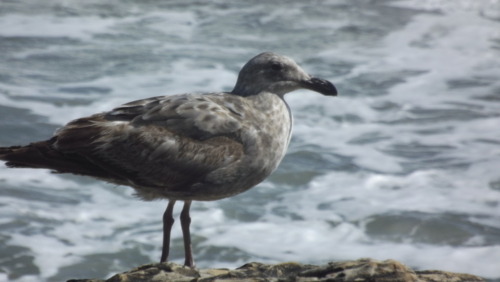While walking the dog in the neighborhood, I suddenly spotted a light blue arrow on the bike trail. As you can see, the arrows continued right down the path. They even went around the bend. What was this?
Was it something from workers who were looking to install cable lines? I kept following it to the main road.
Once I hit the main road and crossed, I was pleasantly surprised to find more arrows.
Then low and behold, I found this written on the sidewalk.
Yes, someone had chalked
tadpole pond and drawn one last blue arrow pointing to the water. . This pond is not really a pond, but a spillway for excess water that pours off the streets when it rains. My curiosity piqued, I wandered down to the water. Tadpoles were everywhere! Thousands of them lay on the bottom, floated and darted around in the water.
The grass was already full of tiny frogs that had made the transformation into adulthood, although they were still very tiny.
What a wonderful idea! I am not sure if it was a parent with a child that made the arrows, or some children out on their daily bike rides, but they marked the spot so that everyone could enjoy these wonderful steps of a tadpole becoming a frog!
I have been unable to identify the frog yet, as it is so tiny and is just a gray color right now.
I have added a link to UW Madison's Field Guide to Frogs in Wisconsin. It is a site that is easy to use for children.
I think we should have more arrow nature hunts in the neighborhood. Maybe I will add one of my own to the trail and mark a plant or tree for the children to find!
 As a biologist, sometimes I think I know enough about trees to understand them. I know these grand ladies have leaves and branches and xylem and phloem and roots that sink into the soul of the Earth. I understand photosynthesis and how trees give us life through sharing their circulation of gases with us.
As a biologist, sometimes I think I know enough about trees to understand them. I know these grand ladies have leaves and branches and xylem and phloem and roots that sink into the soul of the Earth. I understand photosynthesis and how trees give us life through sharing their circulation of gases with us.





